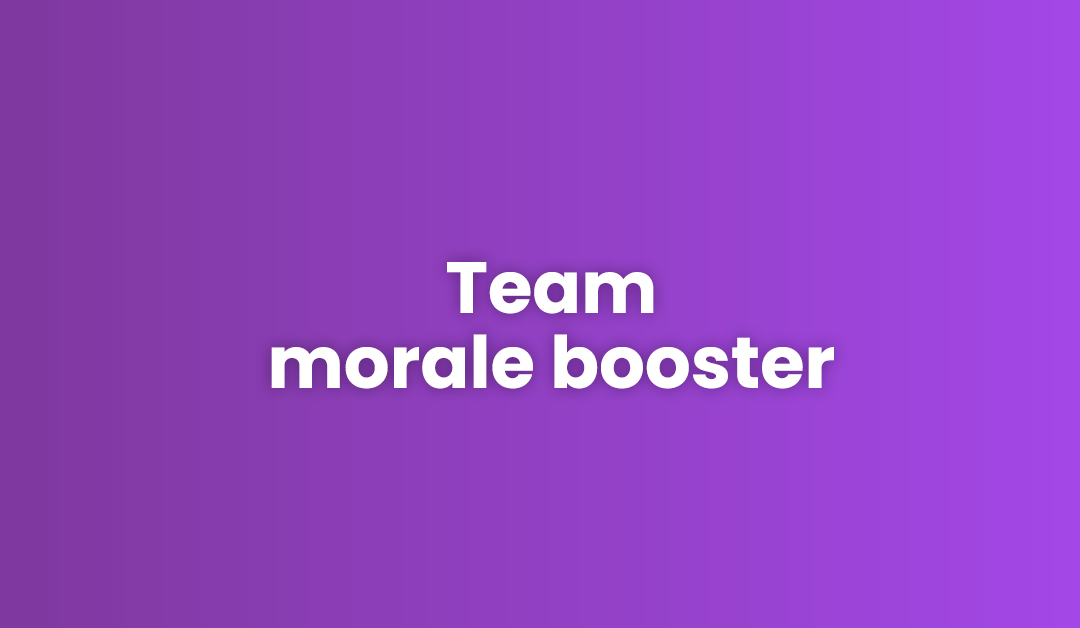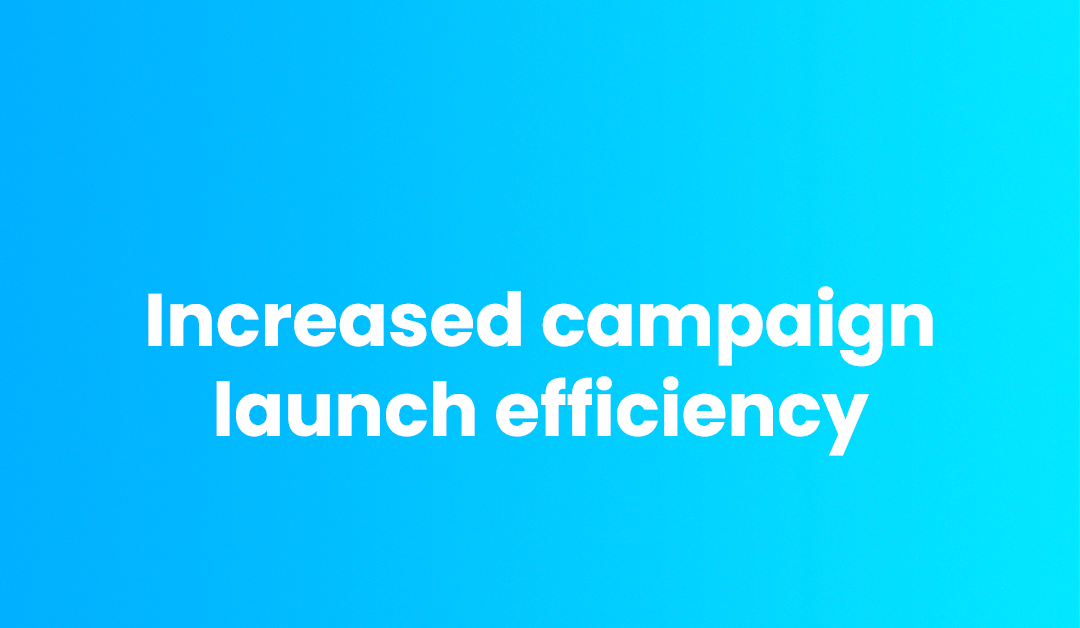22.6.23
‘Award winning’ is a powerful statement, and being shortlisted or nominated for a prestigious accolade brings public recognition of your organisation’s hard work and expertise.
Participating in industry awards is a valuable marketing opportunity for your organisation – helping you to connect with other key industry players, benchmarking your achievements against others and upgrading your peer-to-peer status via a third-party public endorsement.
In many cases, a well-executed award strategy can even elevate industry awareness, strengthen relationships and boost credibility – whether you actually win or not.
Here are some of the key benefits of entering your organisation into industry awards:
Persuading the panel
Most businesses are ‘in it to win it’, entering awards because they want to take home the top prize. But winning isn’t always about how hard you worked, as much as how persuasively you told your story to the panel of judges.
Costly, complex and often requiring screeds of information related to specific categories, award entries require significant time and skill. So, unless storytelling is your strong point, it’s worth bringing experienced support onboard to craft a relatable, emotive and inspiring submission that will significantly increase your chances of winning. Similarly, many awards also allow visual elements to be included, like graphics and photographs. Bringing an experienced design team into the equation will help you create an eye-catching entry that grabs the full attention of the judges.
Marketing along the road to success
If you’re a viable candidate, you’ve already done all the hard work. Once you’ve brought external marketeers onboard, make sure you share all the details of your project with them – including anecdotes, resources, facts and figures. From here, they’ll work with you to carefully analyse the criteria and find where your efforts best fit, selecting your best candidates and categories.
After this, they’ll conduct interviews and research to build a bigger picture of the nominated individuals or pieces of work. Building a compelling case will be about uncovering powerful human-interest stories, impressive figures or stats and showcasing the unique details that make an entry stand out from the crowd.
Maximising the timeline
While it’s tempting to sit back and relax once you’ve submitted an entry you’re proud of, there’s still plenty of work to get on with. Working with your marketing partner, there’s a wealth of traction to be gained from capitalising on key opportunities during an award timeline, starting with the shortlist releases and moving towards the final ceremony.
Use a carefully coordinated programme of strategic marketing to capitalise on prime moments, show off your brand and gain maximum attention. For example, shout about your shortlist on social media, use your nomination to promote a related case study or discuss the project you’ve entered in a blog post. Videos, web banners, newsletter entries, press releases and other content can all be used to highlight your participation, qualifying accomplishments and successful milestones in the competition. While the ultimate goal is to win, use the entire award process as a springboard to create a positive focus on your brand.
Congratulations, you’ve won
Of course, this mileage extends considerably further if you win. Winning an award is a lightning rod for positive attention. Your prospects and clients will be looking to you, so use this to outline the solutions and people that helped you win how support and other services or products that relevant outstanding feedback from the judges or awarding body
And as soon as possible after the announcement, start notifying partners, customers and potential new leads about your success. This will help with the process of transforming your win into new revenue streams and income. Something as simple as including the award logo underneath your email signature is a subtle way to keep reinforcing your brand’s credibility long after the occasion.
Put your entries into safe hands
We have twenty years’ experience crafting award-winning entries for our clients. Whatever the industry and award criteria, we know how to gather the unique stories, impressive stats and strong testimonials to develop submissions that succeed. And while we’re proud of our impressive success rate, we also know it’s not all about winning.
Once the entries are in, we can help you seize this golden opportunity to coordinate organisation-wide marketing efforts that maximise the benefits for your brand and garner positive attention from clients and prospects.
If you’d like to find out more about how we could create award-winning entries for your organisation, please get in touch.
25.5.23
No business is an island - especially not in B2B.
Very few B2B organisations would survive without a network of collaborators, strategic alliances and supply chain partnerships. These successful relationships are one of your business’ strengths, but many organisations are missing a trick by failing to share them with their target market.
Strategic partner marketing is a growth area in the B2B space. Whether celebrating distribution channels, resellers or new collaborative products and services, many organisations recognise that combining their marketing efforts offers a range of mutual benefits, including:
Key considerations for partnership campaigns
Delivering a successful and cohesive partner marketing campaign requires considerable communication and understanding. Before embarking on a partner campaign, there are some critical areas to establish:
1. Find your partnership story
Why did your partnership come about? The most effective B2B partnership campaigns have an engaging origin story like a pressing challenge or shared customer pain point. From here, you can use your marketing to illustrate how, together, you were able to successfully solve the problem before explaining how it brings benefits to both sets of customers.
2. Consistency is key
Alongside getting your stories straight, your brand values and messaging must be aligned, too. It’s vital both organisations are clear and consistent about what they want to mutually achieve, how they’ll work together to achieve it and how the relationship will evolve from there. Clear aims will keep your marketing on track and ensure every piece of content is used strategically to further your partnership goals.
3. Keep messaging simple
Cobranding can be complex. Ensure that both teams start out on the same page and have a thorough understanding of each other’s brand guidelines, target audience, preferred content and tone of voice. This might mean creating shared brand visuals and examining each other’s house style to prevent clashes over things like logo placement.
Throughout the partner campaign, both parties will need to stick closely to these agreed rules to avoid overcomplicated or off-brand content. Simplicity is key to ensuring consistency and continuity across both organisations’ marketing teams.
4. Recognise your combined strength
At the heart of your joint marketing efforts there must be a clear message: how your partnership benefits customers. Outline what each organisation brings to the table and how your different experiences, solutions and services complement each other and add value for your target audience.
5. Understand your new audience
Partner marketing campaigns should expand each brand’s audience by offering access to each other’s customers and followers. Carefully consider which sector of your partner’s audience you want to reach and devise a clear strategy to target them. If possible, consult your partner for support – they should know their audience well.
6. Integrate your campaigns
To generate the most value, be strategic and plan the marketing materials you’ll jointly create and share. There’s a wealth of potential for collaborative thought leadership - think guest expert articles / blog posts, video interviews, joint webinars, co-hosted events, even combined whitepapers and case studies.
Celebrate your partnerships
The benefits are clear but there’s a lot to consider before setting out on a partner marketing journey. An expert steer can help. We have plenty of experience creating content marketing that celebrates our clients’ valuable partnerships and strategic alliances – helping them to illustrate to their customers the value of their partnerships while attracting new audiences in the process.
If you’d like to find out more about our strategic partner marketing strategies and what we could do for your organisation, please get in contact.
19.4.23
Hi AI, we’ve been avoiding you…
Artificial Intelligence (AI), machine learning (ML) and automation are blazing a trail through industries like manufacturing and logistics, upending decades-old practices. But for creative industries like marketing, their potential is less clear. The idea machines could be creative is unnerving; innovation and ingenuity have long been considered uniquely human characteristics. This apprehension means that, unlike other sectors, creative industries have been largely shielded from the transformational power of AI technologies. But is it time for marketing to embrace the step-change this technology could bring?
AI’s supporting role
ML, AI and automation have been working behind the scenes to optimise marketing activities and take over repetitive tasks for years. They enhance marketing activities by assisting with digital ad placement, completing sales forecasting and optimising a huge range of digital outreach strategies. It’s when these technologies take a step-up, as they did almost eight years ago with the launch of the first outdoor AI marketing campaign, that their creative potential becomes more evident. As Saatchi and Saatchi’s poster optimised based on how long people looked at it, this experiment revealed how AI can help marketing shake off its inherent biases. It raised the possibility that technology, not marketing professionals, would give a more accurate indication of the creative outputs people want to look at.
Bringing value to the sector
In marketing, our core purpose is to understand and persuade customers. Thanks to its ability to process vast quantities of data, ML can help further this aim, as the poster optimisation experiment proves. By building a comprehensive picture of its subject, it’s a powerful way to understand customers and make predictions about their behaviour. For creative choices, it can augment decisions about font selection, image placement, word choices, colour schemes, sentence length and more to ensure collateral has the strongest impact on viewers. AI’s potential to optimise creativity means that, according to Harvard Business Review, marketing decisions should be automated “wherever possible”, because “this is where the greatest returns from marketing AI will be found”. In this future, only “the most consequential questions” would be decided by a human.
Should marketing professionals be worried about AI?
For those of us who’ve built careers out of honing our creative marketing skills, should we be worried by this shift from human to machine? The answer is nuanced but, in all likelihood, no. Like other technologies throughout human history, AI will be something innovative individuals adopt as part of their creative process. For many, it will be another tool in their creative arsenal, not a replacement. Consider photography which, far from replacing other forms of artistic expression, is now a creative industry and artform in its own right. As the Artificial Intelligence Review predicts: “maximum benefit from AI will be derived where its focus is human-centric — where it is designed to augment, rather than replace, human creativity”.
To speak to a human about your next marketing campaign, please get in touch! We’d be happy to talk through how our team of creative and personable marketeers can build a powerful campaign strategy that best fits your organisation’s needs.
13.3.23
Every year, the importance of a standout social media presence in B2B increases. By 2025, 8 out of 10 B2B sales interactions will happen across digital channels. To stay competitive and relevant, B2B brands need to keep their finger on the pulse of emerging social trends and behaviours.
If you’re reviewing your social strategy, or carrying out your annual social media refresh, read on for some of the key areas we recommend you take a look at in 2023.
Exploring shorter-form videos
With the rise of TikTok and other ‘snackable’ video platforms, public appetite for short form video content is at an all-time high. Lasting between 21 to 34 seconds, social media algorithms increasingly prefer this type of video content, so it’s going to be critical for marketers. Once regarded solely asa form of consumer-based marketing, it’s likely this type of content will increasingly converge into B2B - especially as more Gen Zers become decision makers and business leaders.
So, what types of shorter-form videos should B2B marketers look to create?
Some ideas to get started include product demonstrations, case studies, video testimonials, expert interviews, webinar promotions and news updates. In the coming months, B2B brands will be looking to harness the reach of rapid-fire visual story telling and those who successfully engage their target audience in this way will no doubt see a considerable boost to their profile.
Prioritising LinkedIn
Like asabell, LinkedIn is turning 20 this year. Still the most commonly used social media platform in B2B,B2B organisations post on LinkedIn 2.5 times more than on Twitter and other platforms. With 75% of B2B marketeers using LinkedIn, and 80% of B2B leads generated on the platform, it’s arguably the best place to establish relationships with B2B professionals who are interested in your services or solutions.
Start experimenting with paid advertising
These days, 84%of B2B organisations are using paid distribution channels for their content marketing efforts. If targeted effectively, paid advertising and sponsored content can generate rapid results, increase exposure, and deliver high ROI.But harnessing paid targeting can take considerable time and fine-tuning. To achieve this, brands must clearly define target audience members, including their specific industry, professional role and department. Wherever possible, use the provided website demographics and analytics tools. Look at who is engaging with your content and then tweak your messaging, spend and format to optimise results. Over time, this should refine your advertising strategy and help you to find what spend and content is most appropriate for each intended purpose.
Maximising value from long-form content
B2B marketing often prioritises longer form content – whether that’s webinars, whitepapers, brochures, articles or even podcasts. But this focus can make it easy to overlook opportunities to repurpose content in ways that diversify your marketing cache. Many long-form materials can be reconfigured into shorter pieces of collateral. This can help attract interest in different ways and via different channels.
Not sure where to start? To help you, we put together a handy guide of key considerations when repurposing content.
Increasing use of carousel posts
Carousel posts are another example of the B2C sector spreading its influence. After first originating on Instagram, they’re becoming increasingly common in B2B marketing. A recent study found that carousels are the most engaging type of post and that they even outperform videos for engagement levels. Using up to ten slides, they can tell complex stories in bitesize pieces, incorporating multiple voices and testimonials. And, crucially, they can also include multiple products and calls to action.
Shaping your future social strategy
These are just some of our predictions for 2023’s B2B social media landscape. If you’d like to find out more about how we can support your social media strategy, please visit our social media page. We’re also offering a limited number of free social media audits until the end of March. Check out our LinkedIn page to register your interest.
9.3.23
Video marketing is an integral part of the B2B toolkit – helping organisations convey complex, compelling messages more efficiently than static text and imagery.
Making sure your videos stand out in today’s crowded marketplace is vital. Videos drive better search engine results and – thanks to the rise of visual search engines like Google’s Shopping Graph and Lens – are increasingly favoured by social media algorithms.
To get the best-possible results, it’s important to be strategic about which type of video marketing suits your specific needs and furthers your short and long-term business goals.
1. Animations
A versatile tool for conveying simple, yet visually exciting stories and messages – animations are a powerful way to attract buyers’ attention.
Often fun, sometimes even fantastical, they embed easily into social media pages. A powerful way to drive user engagement, they can also offer interactive features like embedded links, sub menus and questions that branch into different content. Using animation intros, outros, cutaways and overlays, it’s possible to liven up less visually striking footage with much-needed colour and action.
Check out our guide for producing amazing animations here.
2. Interviews
Whether featuring business leaders or subject matter experts, interview videos are a great way to convey thought leadership and authority to your target audience. Today, with the comparatively high video standards available through camera phones and remote collaboration tools like Teams, creating high-quality videos is easier than ever. But remember, the best B2B interview videos are professional, engaging and flow like a real conversation between relaxed participants.
Read our top tips for self-filming here to get started.
3. Social sharing short
Driven by the likes of TikTok, Snap Chat and Instagram, short, sharp, ‘snackable’ videos have gained prominence over the last decade. Thanks to their growing popularity, they’re now a staple B2B marketing tool, particularly on channels such as LinkedIn and Twitter. Often as short as 20-60 seconds, these videos push brands to refine their messaging while also keeping it persuasive, captivating and informative. With short social videos, the aim is to create something that will be reshared by peers, driving brand awareness and making new inroads into your target market.
4. Webinars
Powerful forums for discussions about the latest insights and research, webinars should offer customers thought-provoking and industry-leading insights around key topics. Usually broadcast live as a launch or hybrid event, they also have considerable value as a piece of long-form content or as a ‘visual podcast’ when hosted online after an event. In fact, 73% of marketers consider webinars to be the best way to generate quality leads.
To help you get started, we’ve created a handy guide for planning and promoting webinars, here.
5. Explainers
If done correctly, an explainer video can condense a variety of different and longer form content into concise and powerful messaging. Generally, these videos focus on how to solve a customer’s problems – beginning with challenges or pain points before suggesting a solution and outlining its benefits. Explainers are about straightforward storytelling, so don’t overcomplicate the messaging and include a clear CTA to encourage buyers along your purchase journey.
6. Case studies and customer testimonials
Case study and customer testimonial videos can validate your products and services by showcasing a client’s experience and displaying the result of a successful project. By enabling a satisfied customer to tell their story, these videos build brand credibility and provide a less biased, more client-focused overview of your USPs. For extra validity points, ask your most recognisable, household name clients to be part of the video so you know it will instantly have traction with your target audience.
Take a look at our blog post for planning your perfect video case study here.
7. Event films
From teasers to post-event outreach content, event films are a great way to showcase the action and key messaging of your brand’s events. These could include clips of key speakers, footage of any activities that took place, short interviews with attendees and even testimonies that celebrate the event’s success.
8. Website banners
Website banners add movement and life to webpages. With this tool, it pays to think carefully about what might enhance your website or embellish the messaging of a particular page. For example, you could showcase a recent event, promote your latest content or celebrate an anniversary. At any time, these banners can be updated to regularly reflect what’s going in your organisation’s story.
Capturing your story
Across all its different forms, video marketing can drive engagement, entertain audiences and allows you to experiment with your brand’s messaging, while reaching new audiences. For these reasons, its popularity as a B2B marketing strategy will only increase.
With almost 20 years’ experience in B2B, we’re experts at crafting purpose-built and visually engaging video marketing to suit our clients’ campaigns. If you’d like to find out more about what we could do for you, please get in touch.
12.1.23
As we enter 2023, what key trends and innovations can we expect to see shaping B2B campaigns?
Refreshing SEO strategies
We’re all familiar with over-optimised, near impossible-to-read articles where the author has tried to maximise SEO by shoehorning in too many keywords. These robotic and repetitive pieces of content are something B2B agencies work hard to avoid, but many find it difficult to tread the fine line between being readable and search engine friendly.
Luckily, some key changes were made to the Google algorithm last year, eliminating the need to repeat key terms to increase search visibility. Instead, the algorithm has been refined to connect users to quality and relevant content that answers users’ needs more effectively. The result is that many marketeers and content creators will be refreshing their SEO strategy and moving from a ‘keyword-first’ to ‘people-first’ approach.
Experimenting with video length
In MarketingProf’s 13th Annual B2B content survey, 78% of B2B content marketers said they will continue to invest in video throughout 2023, a 9% increase on the previous year. And 90% of B2B marketeers said they’re now heavily reliant on video for their online promotion.
It’s been impossible to ignore the surging popularity of short ‘snackable’ video content in the past few years – especially in the consumer sector, where we’ve seen the rise of social media platforms like Tik Tok. Increasingly, we expect to see this model move into B2B, as brands experiment with new forms of video to augment their marketing toolkit. But to do this successfully, business-orientated brands must refine their visual storytelling and hone their core messaging to create engaging and easily digestible short form content.
Increasing that personal touch
Every year, more digital natives move into professional buying and decision-making roles. This tech-savvy demographic expects relevant, tailored content at every opportunity but Gen-Z buyers also valueauthenticity and personability when making purchasing decisions. So instead of steering marketing towards big data and AI-driven targeted campaigns, we expect to see increasingly personalised B2B marketing in 2023.
To win buyers over, B2B brands will need to adopt a more personable and direct tone of voice. It will also be vital to start delivering hyper-focused campaigns that target specific roles, localities and even individual. In 2023’s crowded marketplace, connecting with this target audience on a personal level and demonstrating that you understand their interests, behaviours and needs will win business.
Recent studies have shown that 71% of people now expect personalised interactions and content and 76% of customers today now feel frustrated when their content isn’t personalised.
The rise of hybrid events
Since the pandemic, the way we attend and participate in events has completely changed and a combination of virtual and physical is now the norm for a range of different marketing events. Towards the end of last year, several major advertising and media outlets reported a significant rise in the revenue they were generating from hybrid events – Forbes, for example, saw a 60% rise in revenue as it embraced hybrid event formats.
As a result, we’re expecting to see more B2B organisations embracing this model and combining remote and physical conferences, webinars and networking events. This hybrid approach will give businesses greater scope to connect to a wider, international audience than their traditional reach. And a rise in event blogs, podcasts, videos and whitepapers is likely to follow for those who couldn’t attend.
If you’re considering your own hybrid event, our guide on webinars has some great tips for generating long term value.
Counting on quality
Throughout 2022, as with many other years, mailboxes, inboxes and social media pages were awash with generic, unexciting B2B content.
But despite growing adoption of marketing automation and multi-channel management tools, we’re confident that 2023 will be the year quality triumphs over quantity. It’s a belief reflected in the Content Marketing Institute’s annual survey which found that ‘producing better quality content’ was still the top differentiator for successful brands. As we move through the 20s, organisations that value thought leadership, originality and creativity will continue to stand out from the crowd.
To find out more about how to make your marketing as strategic as possible in 2023, get in touch with the asabell team. We tailor campaigns our clients’ specific needs and always have an ear to the ground to ensure everything we create is impactful for today’s audiences.
10.11.22
The pressure’s on as the busiest time of year approaches. Year on year, Black Friday and Cyber Monday sales continue to grow as an impressive 55% of consumers report spending more during 2021’s Black Friday than they did the previous year.
But this festive season is set to be one of the most challenging yet. Rising energy costs, potential blackouts, the after effects of the pandemic, global tensions, political uncertainty and new trade agreements are all putting a strain on supply routes and pushing up product and delivery costs.
With negative press and anxiety about product shortages building, how prepared is your logistics operation to deliver a successful holiday shopping season?
Change the narrative
The story’s alarmist, and that’s bad for business, making your customers less likely to expand their operations. But there are signs of recovery – the shortage of HGV drivers has eased, petrol and diesel prices have stabilised and, despite strikes, ports and transport congestion is easing.
Because these positive stories garner less attention by the media, it’s up to you to take control of the narrative and assure your customers you’ve got the situation under control. Make sure your clients know that, regardless of what they might have heard, they can still expect reliable delivery times, outstanding service and the ability to handle sudden or last-minute requests – even at the height of the festive shopping season.
Celebrate your success
Just because the industry narrative isn’t always positive, doesn’t mean your organisation’s unique story can’t be. This year, your organisation may have implemented new solutions, secured a range of successes and rolled out operational improvements.
Perhaps you’ve integrated a new automated warehouse system? Adopted new micro-fulfilment centres? Upgraded your fleet? Or even met your sustainability targets? Whatever it is, your partners, competitors and customers should know.
Demonstrate your resilience
As a forward thinking logistics organisation, you’ve likely been planning ahead for this season – scheduling and recruiting, securing extra vehicles, drivers and storage and looking at potential route optimisation to handle the expected surge in demand.
Maybe you’ve even been running tests on your critical infrastructure like IT systems, website and warehouse automation platforms to make sure they can cope with the added strain. If you’re putting in all this effort, it’s time to share your preparation with customers and demonstrate that your operation is a strategic, safe pair of hands for the season.
Market every mile
We’re experienced supporting our logistics clients through their biggest challenges – helping major organisations create marketing content that tells their unique story and demonstrates their ability to deliver for their clients on time, every time.
26.10.22
Innovation and game-changing solutions are the lifeblood of B2B. Without them, there’d be no disruptive market forces or exciting new opportunities to talk about.
But transforming the complex processes and painstaking hard work behind state-of-the-art technology into a compelling and accessible read is a fine art.
How do you create attention-grabbing content that holds the reader’s interest while also conveying the specialist knowledge and technical details that ensure conversions?
Here are our top tips for talking tech and convincing senior decision makers that, with your marketing support, their technology is safe in your hands.
Delivering the right level of knowledge
The first step is to understand your audience. Are they cybersecurity specialists? Part of a procurement team? Logistics and operations managers? This will help you tailor your content to your readers’ professional interests and level of understanding.
Most readers are likely to be reading an extension of their work, so think carefully about what they want to know. For example, a cybersecurity specialist is probably not interested in reading an article explaining how a firewall works – this is assumed knowledge that won’t engage a reader with such a high level of industry knowledge. They are far more likely to want to hear about new innovations in the market, emerging trends or challenges – so always ensure that your focus remains at the forefront of the industry you’re discussing.
Transforming expertise into powerful storytelling
Regardless of technical subject matter, good content should always tell a story, not read like a manual. That’s where the expertise of copywriters comes in.
As opposed to letting subject matter experts (SMEs) write content themselves, gather their insights and let the copy experts turn it into something engaging, compelling and easy to understand.
There are some basic questions you can ask to make sure you have the most relevant information from your SMEs:
- Why was the solution created?
- What’s the current landscape or background to its development?
- Were there any other challenges or discoveries along the way?
- What was the end result?
- How will the solution benefit the industry?
Then, think about the solution’s USPs. What makes it stand out in the market? And where can it assist more generally in terms of time and process efficiency, cost savings, quality improvements and so on.
We’re experts at working with experts. Take a look at our short guide on working with SMEs to create valuable and engaging content, here.
Capturing terminology and tone
To prove your credibility and experience, it’s important to use correct industry terminology, as well as recognising where terms or concepts need extra clarification. Poor technical writing is clouded with jargon, buzz words and acronyms. Sometimes, these terms and abbreviations are just concepts repackaged by marketeers – so think carefully about what they really mean before using them.
Likewise, make sure your tone is appropriate for the audience and always make sure it’s in line with established brand voice. A sprinkle of expressive language will show you care about the subject – but don’t fall into unnecessary hyperbole.
Drilling down into detail
If your content doesn’t convince your reader, they won’t proceed to the next stage in the purchase funnel. Because you’re communicating with technically qualified professionals, you need to support the compelling story around your new solution with stats, insights or links to reputable sources. Real life and relatable examples, particularly case studies with clear deliverables and results, are a good way to win the audience over.
At the same time, still format for easy reading by keeping paragraphs short, using strong subheads to summarise each section and, if necessary, step-by-step instructions or bullet points to outline more complex instructions or solutions.
Tell your story
We’ve got decades of experience producing technical and informative content for our clients – visit our eBook to find out more about our tech expertise.
29.9.22
It’s easy for whitepapers to fall into the trap of being nothing more than thinly veiled sales tools. Just a few pages in, it quickly becomes clear that the paper lacks authority and fails to provide anything new or meaningful to industry conversations.
Rather than eagerly pushing products and services, whitepapers should focus on problem solving – generating real value by helping, informing and inspiring their audience. From here, they have the power to create long-term, meaningful business leads and to set an organisation up as a thought leader.
So, how do you write a whitepaper that establishes your credibility and showcases your organisation as an industry front-runner?
Gathering your insights
From the outset, take a two-pronged approach to gathering your inputs and insights.
Use your subject matter experts for in-depth and refined details in your whitepaper – their daily experiences on the ground will offer valuable insights on the most pressing trends in the industry. Ask them: What’s affecting customers? What questions are they fielding regularly? What challenges are emerging in their market? This will help identify your customers’ key pain points as well as guiding the main topic and core sections of your whitepaper.
Next, consult your sales directors and use their input to steer wider market research. The sales team will provide ‘bigger picture’ context, supporting evidence and balance for the final paper.
Maintaining thought leadership
After you’ve gathered the content and inputs, make sure your unique perspective is present throughout the paper. Here are our top tips on letting your thought leadership shine through:
- Show that you understand
Your readers want to feel that you understand their pain points and the environment they’re operating in. Expand on their challenges and make sure you provide answers to the issues that are relevant to them. - Avoid overexplaining
Don’t overexplain or spell out the obvious – readers will quickly find this frustrating, and it will undermine the level of understanding you’re trying to convey. Instead of wasting words on setting the scene, get stuck into your advice and ‘value add’. It’s fine if this means the paper is shorter – succinct and concise information that’s genuinely beneficial is better than pages of unhelpful detail. - Break down your advice step by step
Explain your new ideas and the solutions you’re offering in the simplest, most concise way. Breaking down your recommendations into manageable stages will empower your reader and help them understand how they can implement your advice. - Minimising your sales talk
You’ll quickly undermine your positioning as a thought leader if you mention products and services early in a paper. Thought leadership should first and foremost be about sharing advice, knowledge, expertise and insight. Keeping your brand’s solutions close to the end of the paper, and using a light touch approach, is the best way to ensure the value of your insights isn’t undermined by overt sales messaging.
To find out more about writing market-leading whitepapers, please contact us.
27.8.22
As a B2B content commissioner, a prime part of your role is to make sure internally and externally produced content speaks with your brand’s tone of voice – but what does that mean in practice?
All too often, corporate brand guidelines focus on a list of aspirational statements and are light on detail – the specifics of what you should be looking for when you review blog posts, whitepapers, brochures and eBooks. Vague, subjective pointers like ‘be inspirational’ aren’t always the type of practical guidance you need.
We’ve been interpreting and implementing global organisations’ tone of voice guidelines for over 16 years now, so here’s a brief rundown of our top tips…
1. Look beyond the aspirational aims
Use any tone descriptors to give you a flavour of how a brand aims to sound, but don’t get too hung up on trying to interpret them into concrete examples. They’re usually included to paint a word picture, rather than to provide hard-and-fast rules. Remember, too, that these descriptors are highly subjective: what’s ‘visionary’ for one person could well be exaggeration for another.
2. Take your guidance from the examples
Good tone of voice guidelines will include plenty of examples, usually demonstrating before and after scenarios. This is where you can really get to grips with the mechanics of tone, seeing it in action and understanding how it varies between different content types. Often you learn as much from what the brand team doesn’t want than from what it does.
3. Remember the constants of any brand voice
The brand voice may go through many updates, but the fundamentals of tone will remain the same:
- communicate clearly and directly, leading with the benefits for the target audience
- get to the point – take out any sentences that don’t add value
- cut the jargon
- beware of over claiming – it’ll devalue your message
- use an appropriate level of explanation – don’t assume and don’t patronise
- be led by your audience – the tonal shade that works for CEOs might not be right for colleague communications.
4. Get a second pair of eyes on it
Particularly in the early days of a brand voice update, it’s often useful to get a marketing colleague to review the tone of a piece of content. This way your team will quickly build up a shared view how your brand voice should be brought to life and will be ready to give constructive feedback to content creators.
5. Connect with your brand team
Your brand team have invested huge amounts of time into developing the tone of voice guidelines and they know them better than anyone else, so use your brand colleagues. It’s never helpful when marketing departments see brand as a hindrance to getting content out. Instead, see the brand team as a resource you can tap into for clarification and guidance. Bringing brand in on your first few content reviews, or on any tricky issues, is always a good idea and will deepen your tonal knowledge for the future.
We are experts at creating B2B content in your brand voice. Get in touch if you’d like to find out more about working together.









